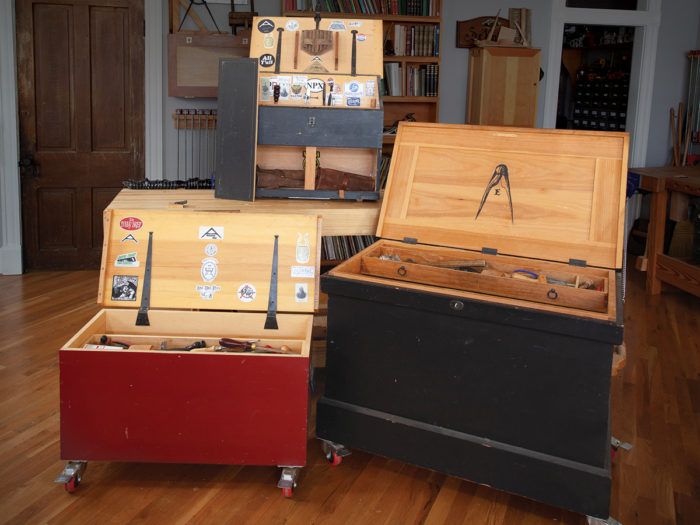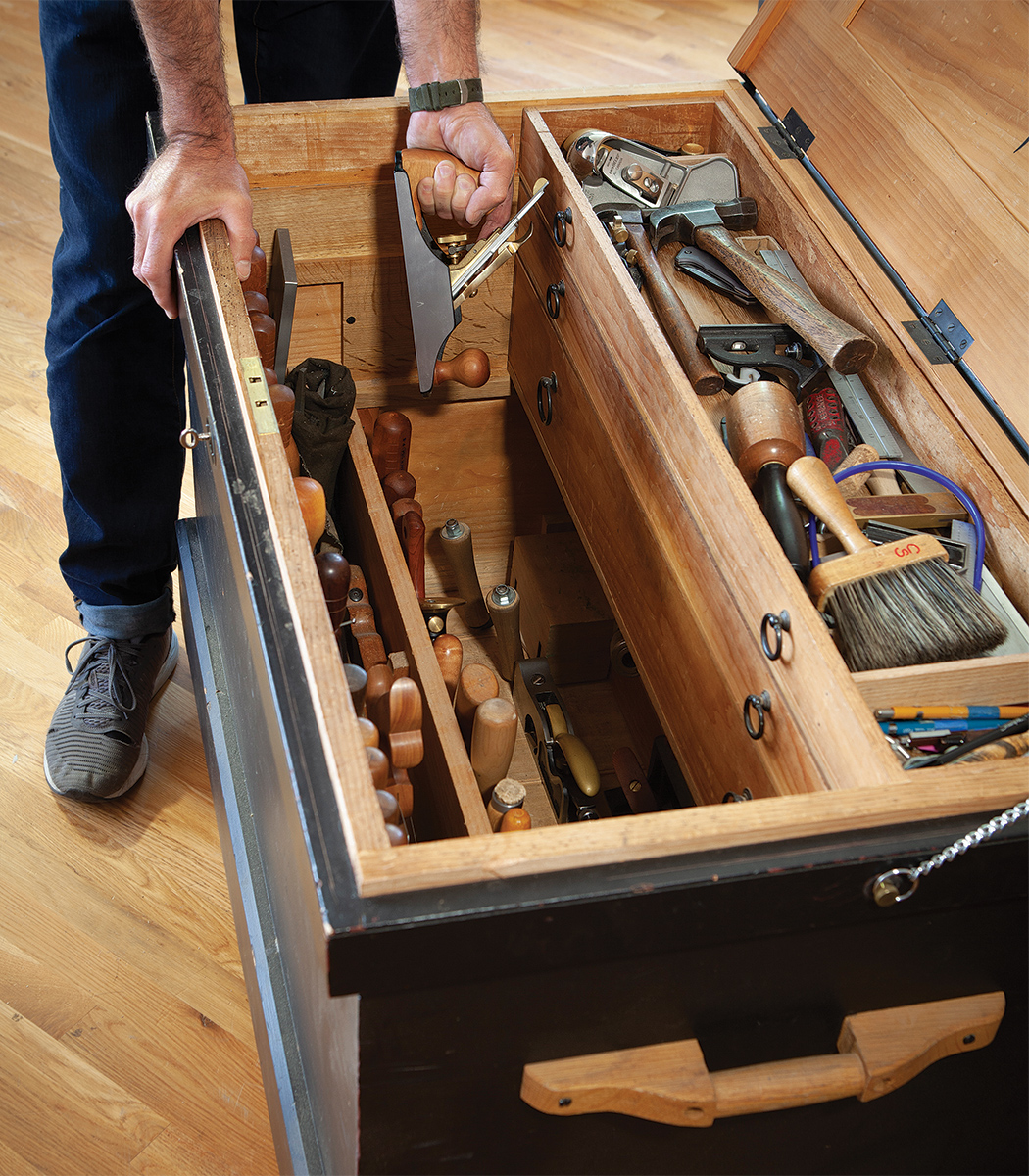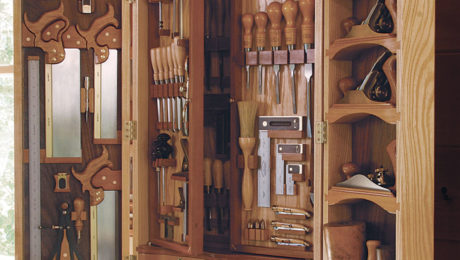Twenty years with a tool chest
Chris Schwarz has worked out of his tool chests for decades, and finds them to be the perfect combination of protection, access, and flexibility.

Synopsis: The perfect combination of protection, access, and flexibility. That’s what Chris Schwarz finds in his tool chests, which he has worked out of for decades. Here he describes two main types: a full-size floor chest and a Dutch tool chest. The full-size version is of dovetailed construction, with tool trays and a dust seal, possibly some tills for saws and planes. The Dutch chest is more portable, less complicated to build, and has fewer dividers and tool holders.
While many woodworkers regard tool chests as antiquated or quaint, I have found that they can offer the perfect combination of protection, access, and flexibility for storing hand tools.
Fortunately, the simple and common forms of chests are far more useful than their fancy, inlaid cousins with Frenchfitted compartments. My chests are tools themselves, and I design them to be used for the long term. From its size to its mode of storage, a tool chest should aid your work, not hinder it, even when your work inevitably evolves. After decades using them, I’ve learned many of the advantages, and a handful of the disadvantages, of working out of tool chests. I’ve also learned how to stack the odds in my favor.
Two main designs

I mostly work out of either a full-size floor chest or a Dutch tool chest. The former is time-consuming to build but holds more tools. It is also stronger. The floor chest’s shell is typically dovetailed together and wrapped by skirt boards, which are also dovetailed. The bottom boards are nailed in place. Skids attached to the bottom let the chest slide easily if it has no casters. The lid has a dust seal. Inside, there are usually two or three dovetailed tool trays that slide forward and back. Sometimes there are tills for saws and molding planes.
The Dutch chest, being smaller and simpler, is easier to travel with and quicker to build. The chest sides are dovetailed at the bottom corners. The shelf is captured in a dado. The rest of the parts are nailed or screwed in place. The chest has a sliding lock on its fall-front. Historically, these chests didn’t have many dividers or tool holders. Most had only one divider in the top compartment. Some had a drawer, either below the top compartment or attached at the base of the chest. Some chests are a little taller and have two lower compartments.
Despite their differences, the pros and cons of each, as well as my strategies for working out of them, are largely the same.

From Fine Woodworking #286
To view the entire article, please click the View PDF button below.
 |
|
 |
|
 |
Fine Woodworking Recommended Products

Olfa Knife

WoodRiver Router Bit Storage Case

Woodriver Rechargeable Desiccant Bag







Comments
decades??
It feels like decades. Its getting a bit monotonous...... I feel like we know everything that's necessary about this tool chest now and its time to move on.....
I love these three chests shown above. I built my first one pretty much like the English tool chest back in the 90s. It was 24 x 24 x 46 due to the tools I used, I was a pattern maker / fitter in a vessel shop. Years after tons of abuse I built another that was 24 x 24 x 42 that was eventually brought home because I had changed jobs and in 2017 after having over 5' of water in my home from Hurrican Harvy, all of my tool chest and tools including my entire shop was destroyed. It's taken 5 plus years to try to replace my hand tools that could not be salvaged. Chris has always been an inspiration and with that being said I have now started on my new English floor chest and Dutch tool chest. The floor chest will be made from white oak the Dutch chest out of popular. Thank you, Chris Schwarz for being the teacher and inspiration you are.
Log in or create an account to post a comment.
Sign up Log in